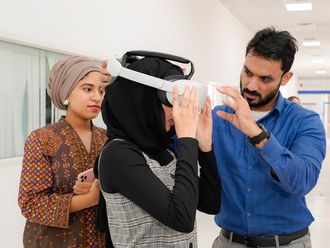
Covid-19 is an infectious disease caused by the SARSCoV-2 virus. The majority of diagnosed cases, about 80 per cent, are either asymptomatic or suffer from mild symptoms, and 20 per cent of diagnosed patients have symptoms of varying severity requiring hospitalisation, while 5 per cent of these hospitalised patients are critically ill and require admission to the ICU. Critically ill patient have bilateral pneumonia, respiratory distress, multiple organ failure and clot formation.
Lung injury leading to ARDS
Covid-19 patients who are severely affected and admitted to the ICU with pneumonia in both lungs and acute respiratory distress syndrome (ARDS) require mechanical support for their breathing, which could be non-invasive or invasive. The reason for lung injury leading to ARDS is the release of chemicals in the body, known as cytokines, in response to the viral infection.
Other associated reasons could be drug induced, high airway pressure during mechanical ventilation and high flow oxygen. These severely ill patients treated in ICU have high levels of mortality. A real concern in cases recovering from ARDS remains about the long-term effect on the lung function, and whether the lungs will recover completely. Other coronaviruses, such as the SARS virus that caused SARS epidemic in 2003, are similar to Covid-19 and have also been shown to cause acute lung injury and ARDS in patients. The long-term follow up of SARS cases with ARDS shows some patients with findings of lung fibrosis affecting the lung function. These patients have symptoms of breathing difficulty, cough and chest discomfort.
Severely affected patients with ARDS require long-term follow ups after recovery to keep a check on residual signs of pulmonary fibrosis (lung scarring) and lung function impairment. Besides lung related issues, recovering ARDS patients also suffer from cognitive impairment and depression. They are also prone to fatigue and weakness with limited movement ability due to muscle and nerve weakness. Collectively, this is called Post Intensive Care Syndrome.
The next step is to follow such cases closely over time with an assessment of symptoms such as cough, breathlessness as well as chest X-rays, CT scan, pulmonary function test and exercise test so as to pick up residual lung function impairment and lung fibrosis as early as possible.
At the moment there are about 15 million cases worldwide – of which 5 percent have ARDS and/or multi-organ failure (MOF). These cases are going up as we write. It is important that they are handled with the utmost care so that patients can resume good quality life once they come out of emergency situations. Patients with bronchial asthma, interstitial lung disease, pulmonary hypertension, and lung disease should take all necessary precautions and see their doctor if new symptoms develop, or if the existing symptoms worsen. They should receive prompt treatment as out-patient or inpatient, depending on the severity of symptoms.
Patients with normal lungs, who develop Covid-19 related ARDS should follow up with their pulmonologist post-discharge regularly for an assessment of their condition so that their recovery is completed with no or minimal lung scarring.
-- The author is a Consultant, Pulmonary Disease and Internal Medicine, JTS Medical Centre
- Advertiser's Content













